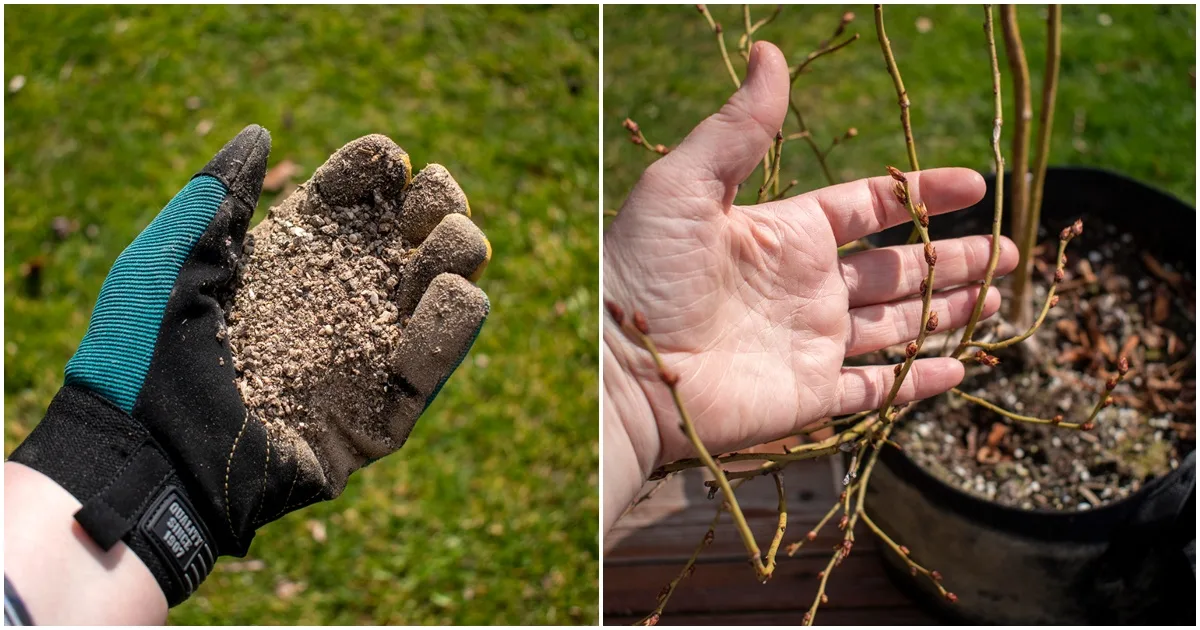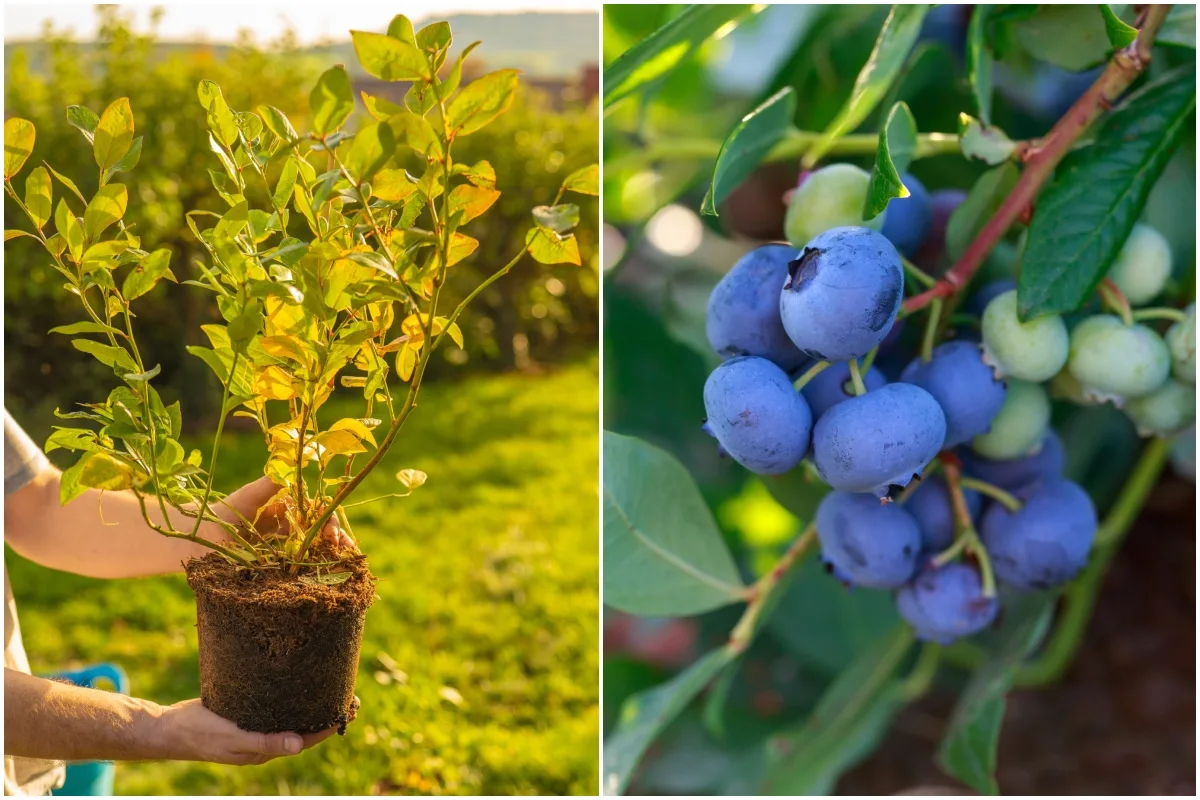
Blueberry (Vaccinium corymbosum) is an ancient North American species, wilder than most other plants you can grow in your edible landscape. Having only been in cultivation for about 100 years – a mere blip in agricultural time – blueberry plants haven’t been selectively bred for centuries like many other food crops.
That means blueberries are fairly undomesticated and still prefer their natural habitats – swamps, bogs, and pine barrens, where the soil is always moist and porous and acidic.
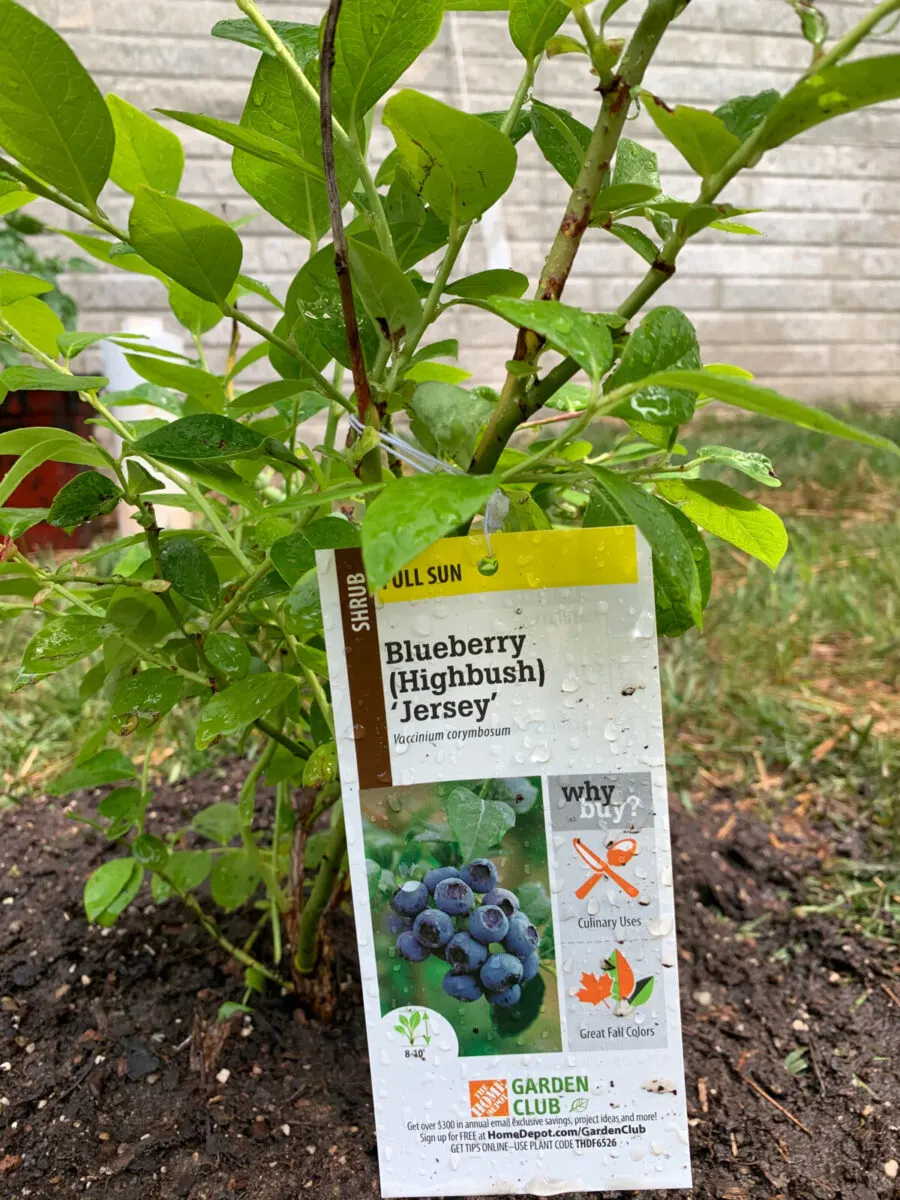
Blueberries require a low pH of 4.0 to 5.0 in order to absorb nutrients from the soil. Their roots are shallow and extremely fine, only about the width of a human hair, and are far too delicate to grow through heavier clay soils. The root system goes a foot or less deep, so the planting site needs to retain moisture but also have excellent drainage. And to really thrive, blueberries need to grow in plenty of organic matter, but it shouldn’t be too rich in nutrients.
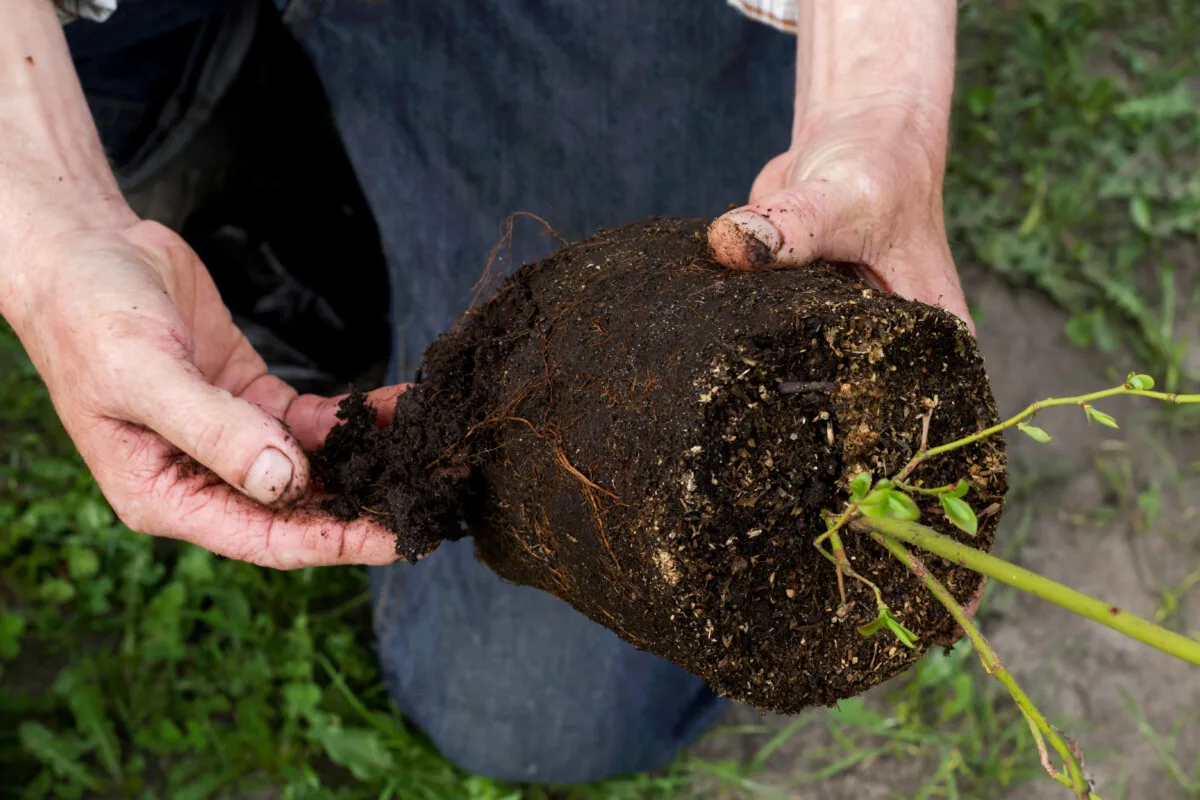
If you can get past the particular idiosyncrasies of growing blueberries in the home garden, you will be supremely rewarded in time. These are long-lived perennial shrubs, beautiful in every season, and prolific providers of fruit.
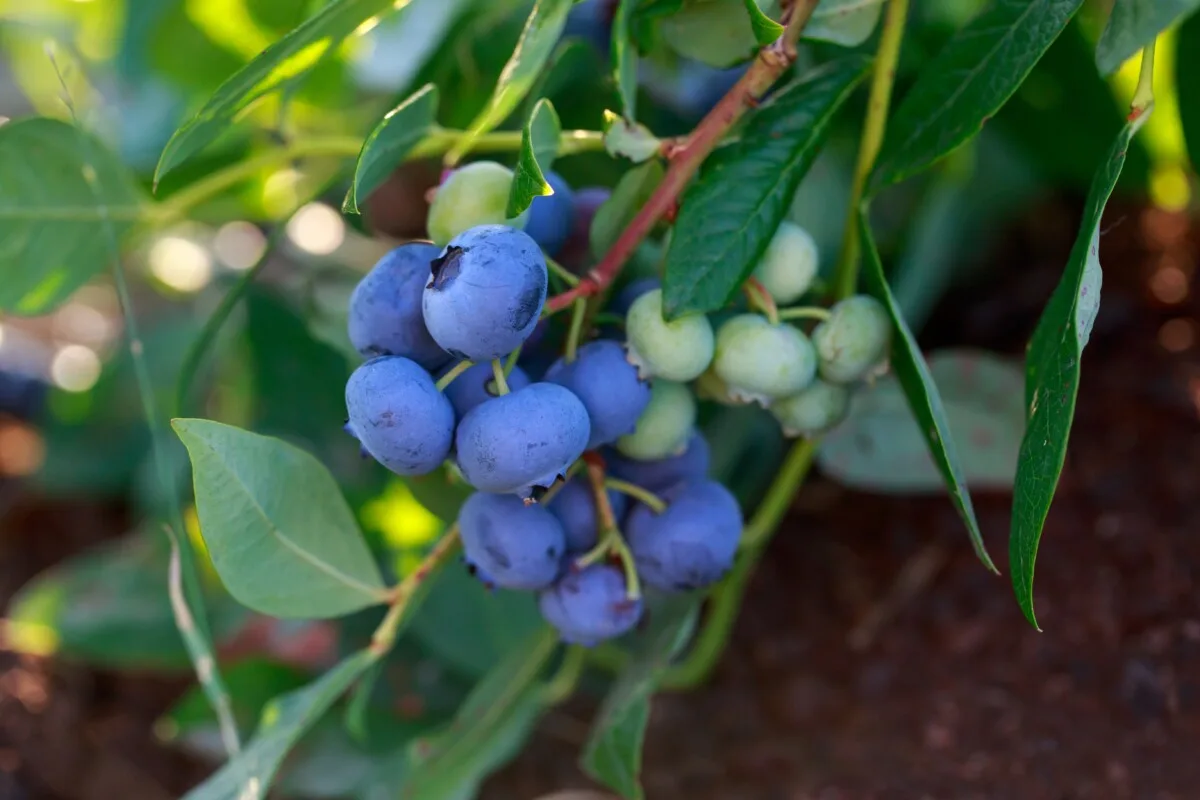
Keeping your blueberry bush believing it’s back in the boreal forest is the trick to establishing healthy and happy plants. You can make blueberry feel even more at home by doing a bit of matchmaking, too.
Buddying up your blueberries with the right plants can help maintain soil acidity, boost pollination and fruit set, increase harvest yields, and keep pests in check. As a form of permaculture, companion planting will go a long way toward making your blueberry shrubs more self-sustaining and resilient.
7 Companion Plants for Blueberry
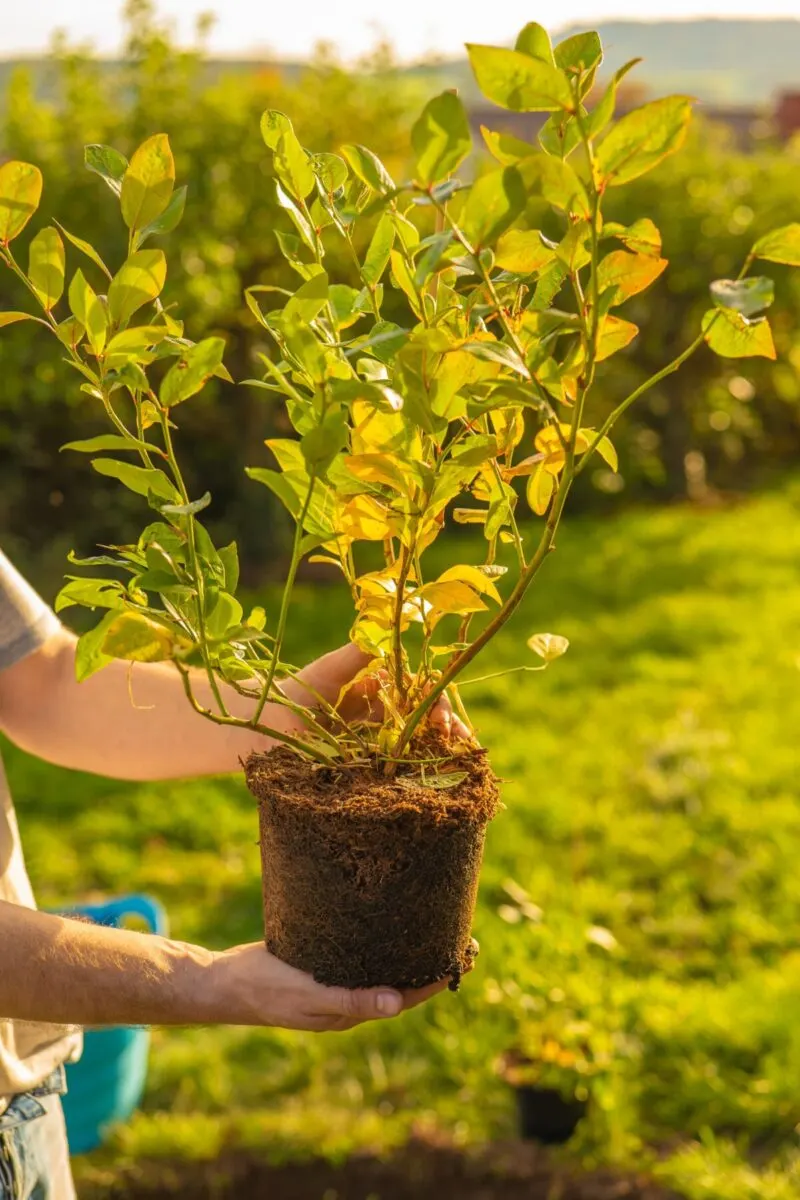
Blueberry’s wild traits make it more suited to a woodland environment. Because blueberry has unique needs, it can be helpful to think about how it would grow in a forest garden.
In the blueberry shrub’s natural habitat, there would be multiple layers of plant life. The upper canopy would consist of pines and other conifer species. The understory below might have smaller trees like dogwood. Along the shrub layer, blueberries, rhododendrons, and azaleas would grow. The herbaceous layer could have a mix of wildflowers and ferns. And lastly, the ground cover might be filled with aromatic and small-flowered herbs.
To better replicate blueberry’s home turf, let’s let nature be our companion planting guide. Here are seven types of plant that get on well with blueberry:
1. Conifers
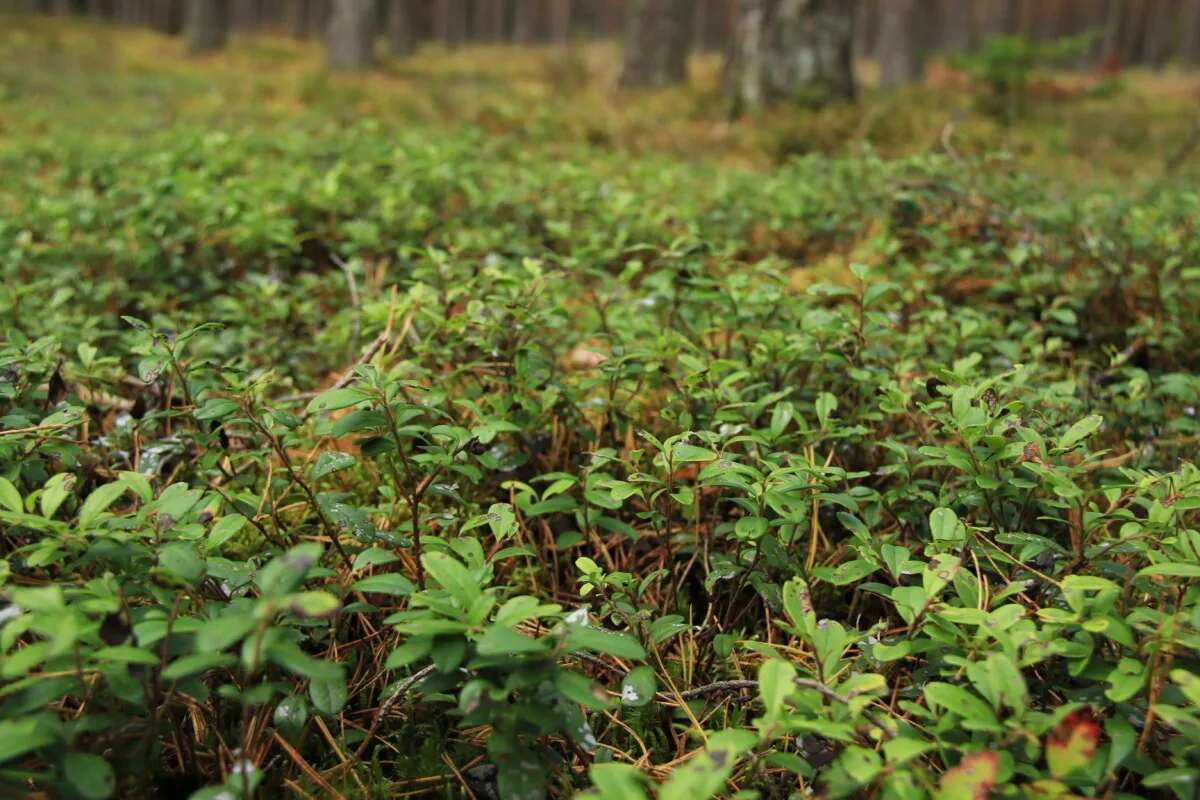
The first step in caring for blueberries is testing the pH of your soil. If your native soil isn’t naturally acidic, you’ll need to purchase elemental sulfur to acidify the soil around blueberries. The pH will creep back up to neutral or alkaline over time, though, and you’ll have to continually monitor and adjust for acidity.
In permaculture, the aim is to create closed-loop systems where there is little or no need for external inputs. One way to minimize your out-sourced amendments for blueberries is to simply plant them next to conifer species.
Conifers comprise an enormous family of trees and shrubs, including cedars, pines, firs, junipers, cypresses, yews, spruces, larches, redwoods, and hemlocks. All have varying levels of acidity in their needles and bark. Pine is particularly potent; freshly dropped needles have a pH of 3.2 to 3.8 and the bark ranges from 3.7 to 4.0.
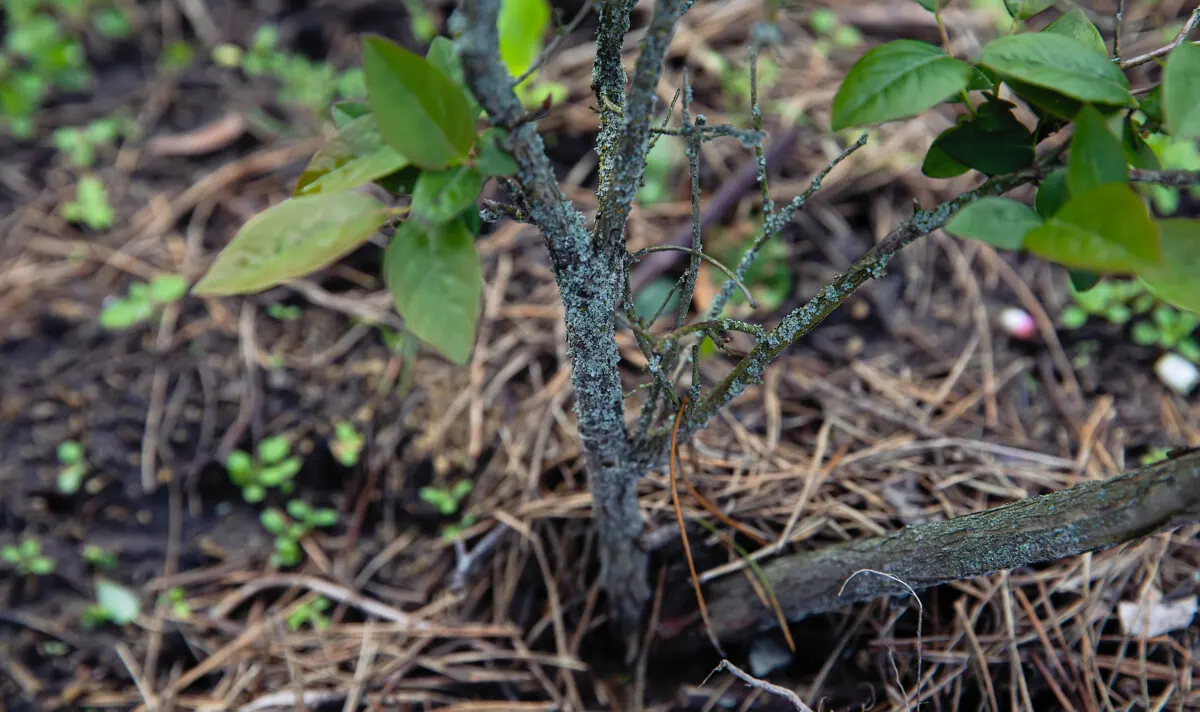
The fresh litter from pine and other conifers is rich in acids, but these materials have a tendency to neutralize as they break down. That’s why it’s safe to use pine needles as mulch around your garden because the immediate effect on soil pH is minimal.
When dropped needles, bark, twigs, and branches have slowly accumulated for years – like around an established evergreen – the soil will be naturally more acidic.
In the wild, blueberries are quite chummy with conifers so it makes sense to keep this relationship going in the garden.
As long as the spot you plant blueberry receives full sun, a conifer tree or shrub in close proximity can make for the ideal neighbor. Rake up the pine droppings to redistribute them around your blueberries, or bury them in the soil for a slightly quicker pH adjustment.
2. Flowering Dogwood
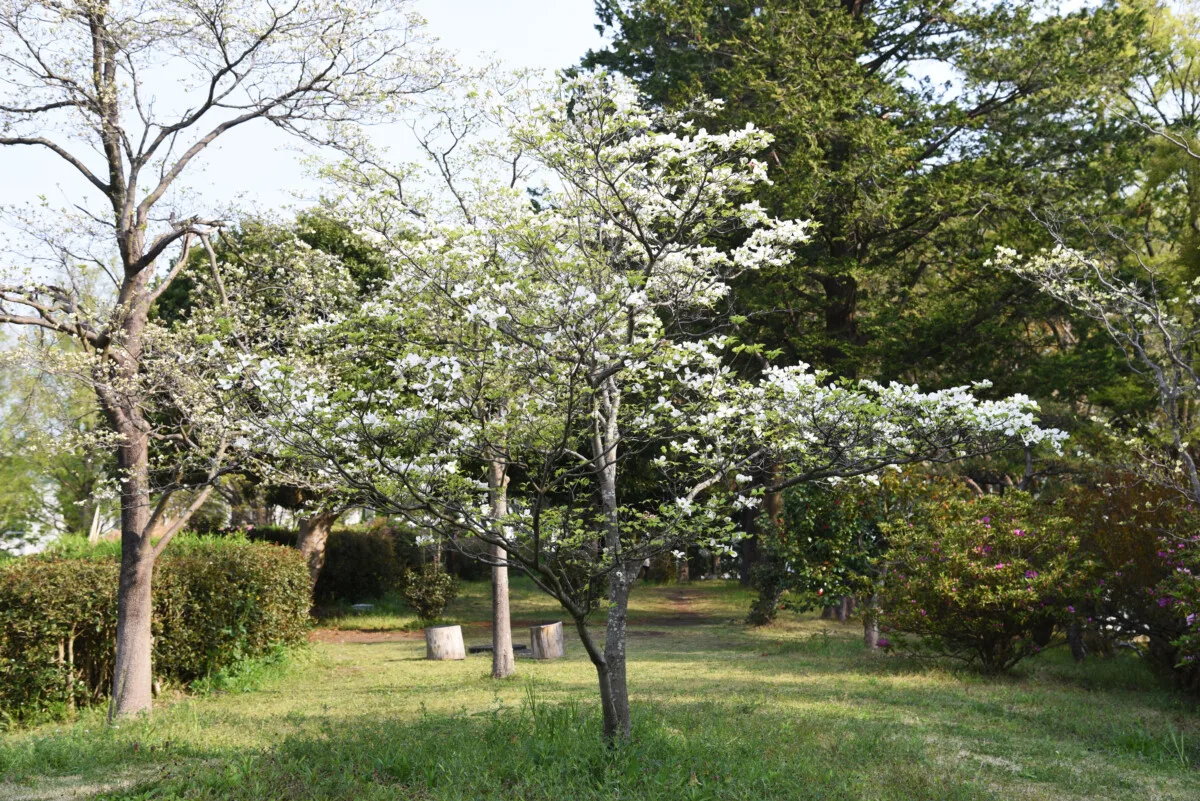
Flowering dogwood (Cornus florida) is another long-time BFF of blueberry.
A gorgeous native shrub or small tree, flowering dogwood ranges along the east coast, west of the Mississippi from Maine to Florida. Because it’s an understory plant that grows in mixed forests, floodplains, bluffs, and swamps, flowering dogwood can be a bit fussy about where it is planted in the home garden.
Flowering dogwood prefers the soil to be moist, drained, and acidic – just like blueberry. Since these two share much of the same habitat, flowering dogwood is a natural choice of companion for blueberry.
Dogwood flowers on naked branches in April and May, drawing in bees, butterflies, and other pollinating insects. Pair it with an early season blueberry to take the most advantage of the pollinator boon.
3. Azaleas, Rhododendrons, and Other Ericaceae
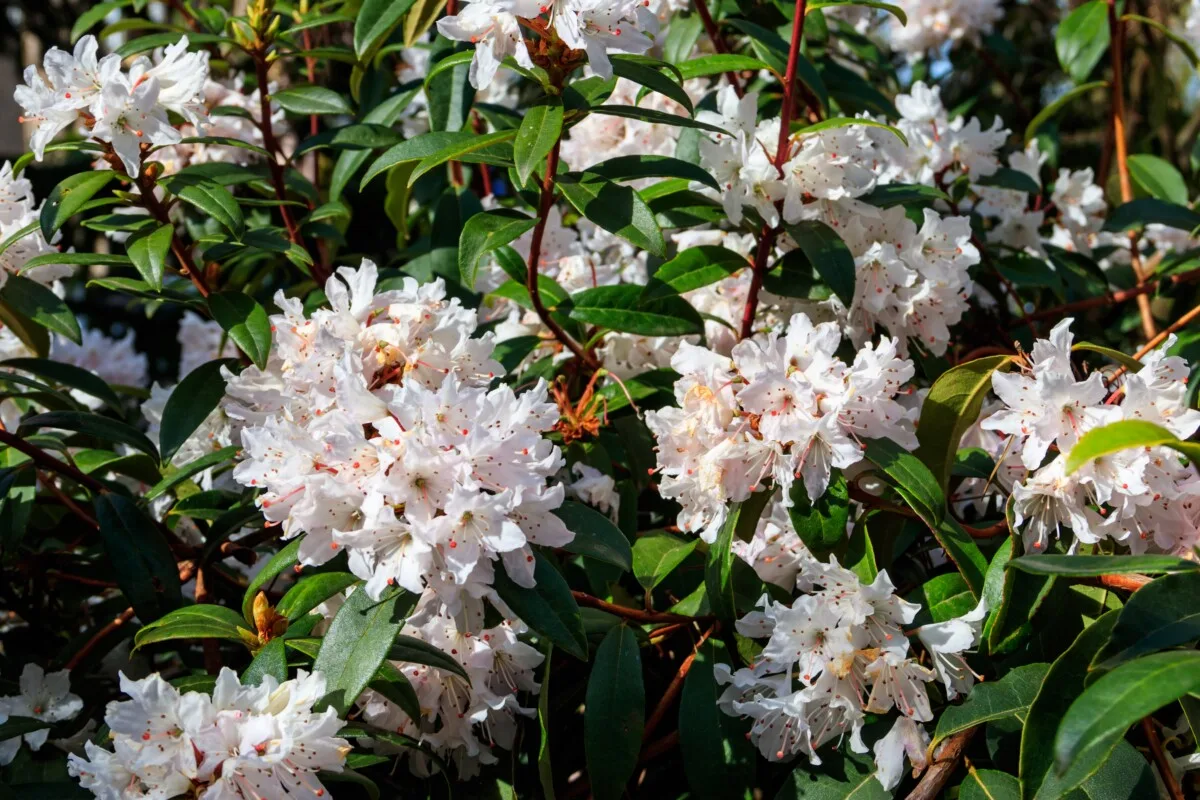
For blueberries and other Ericaceae – the family that grows together, stays together.
Some of blueberry’s oldest pals are other members of the heather family. For millions of years, azaleas, rhododendrons, mountain laurel, wintergreen, huckleberry, and bearberry have grown alongside blueberry shrubs in boreal forests and wetland margins.
Bonding over many millennia, these plants have evolved together and share near identical growing conditions. All Ericacaea have a love of acidic, organically-rich, low-nutrient, moisture-retentive, and well-draining environments.
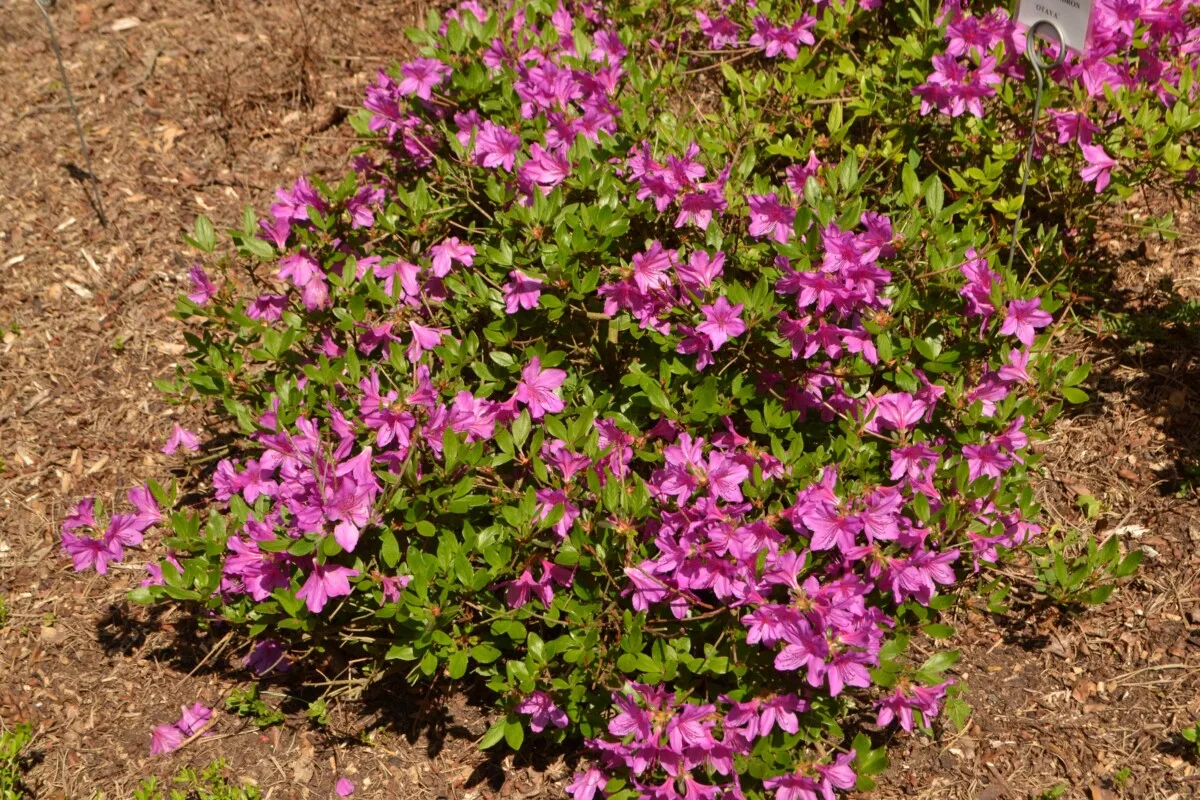
This unusual culture is easier to maintain when you keep blueberries with Ericacaea plants in the same planting bed. What’s good for one is good for all, allowing you keep to a single pH testing, fertilizing, and watering schedule.
4. Another Blueberry Bush
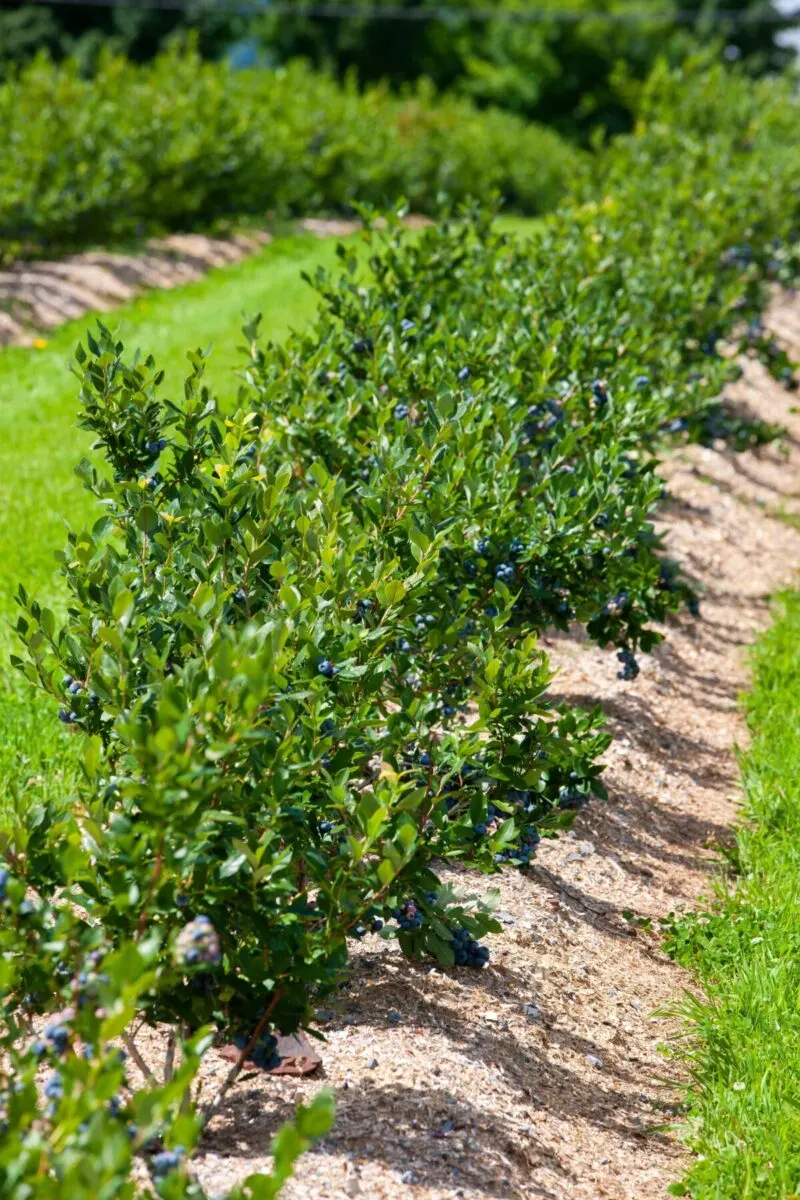
One of the secrets for huge harvests and the plumpest blueberries is to grow two or more blueberry varieties with overlapping bloom times.
Although most blueberry cultivars are self-fertile, blueberries massively benefit from cross-pollination, and will bear noticeably larger fruits and much bigger yields.
Despite only about a hundred years of tinkering, there’s an amazing variety of blueberry cultivars available to home growers. Many are cultivars of Northern Highbush (V. corymbosum), but Southern Highbush (V. formosum) and Rabbit-Eye (V. virgatum) varieties are also worth a look.
To achieve good cross-pollination, blueberry plants should have staggered flowering periods. Match up a few early-season, mid-season, and late-season cultivars for a continuous harvest all the way from June to August.
Here’s a handy guide for pairing up blueberry types according to blooming and ripening times.
5. Acid-Loving Ferns
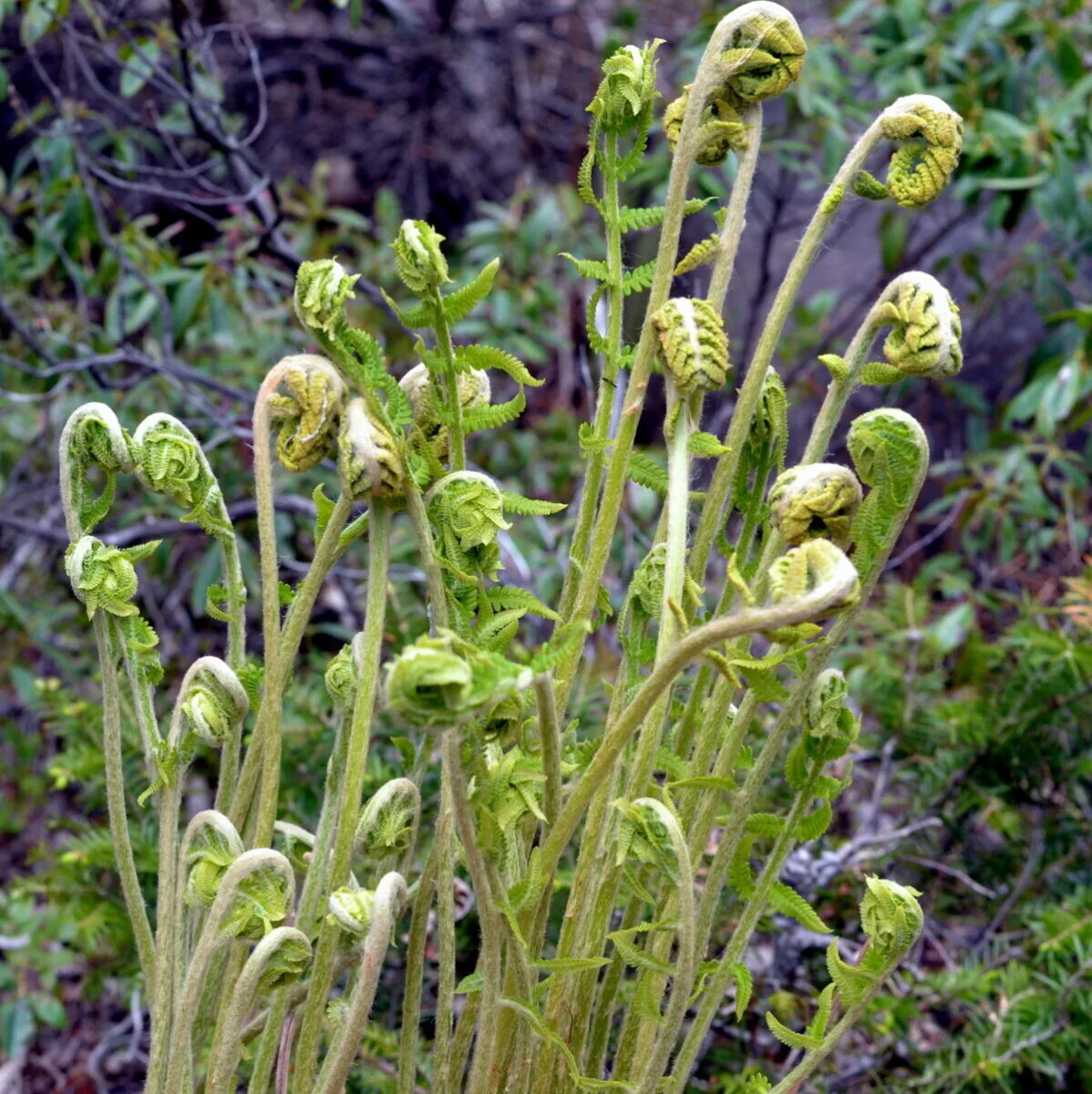
Ferns are a fantastically strange group. The lush green feathery foliage is delightful, but they weirdly reproduce by spores and can thrive in zero sunlight. It’s almost like ferns are part plant, part mushroom.
Not all fern species appreciate acidic soils, but a few native species hail from the same woodland bogs as blueberry.
Namely, cinnamon fern (Osmunda cinnamomea), royal fern (osmunda regalis), and common bracken (Pteridium aquilinum) are found peacefully co-existing with blueberry shrubs in pine forests.
A mature blueberry can reach 10 feet tall and wide, casting a fair amount of shade. Tuck a few of these native ferns in its shadow, where nothing else seems to grow.
6. Native Wildflowers
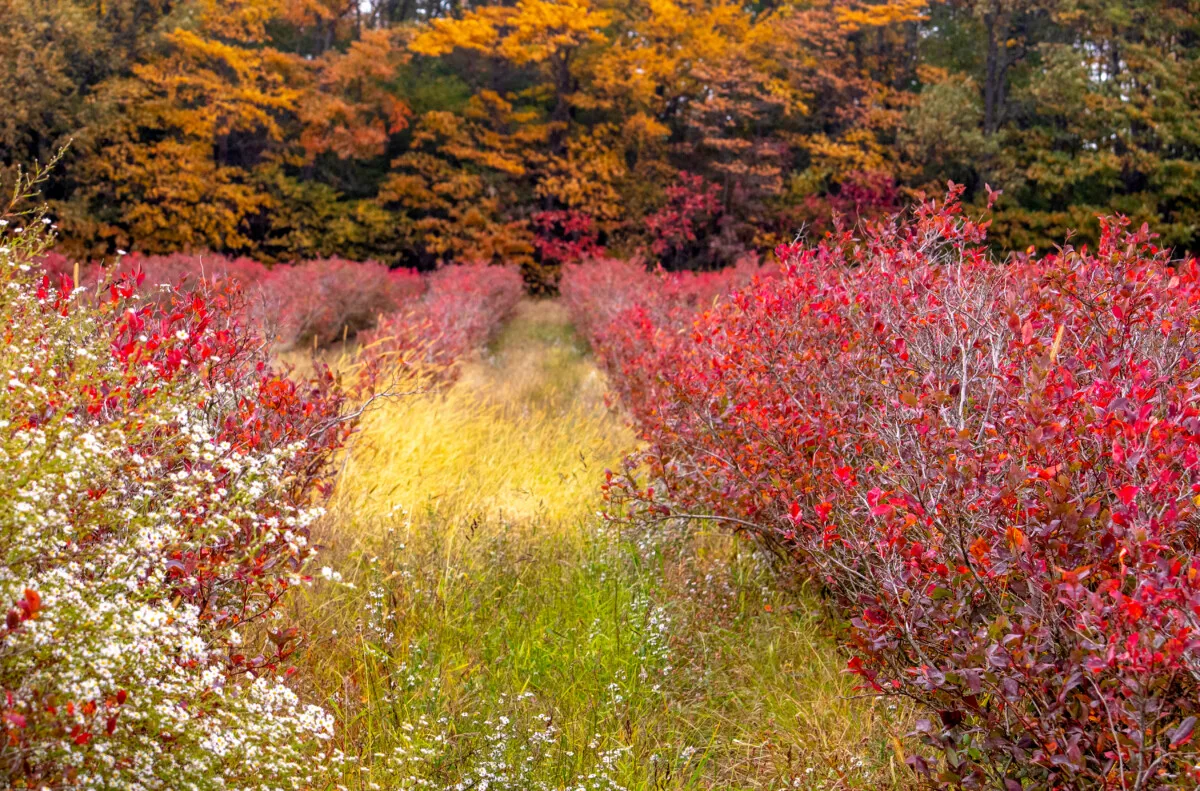
A healthy and well-established blueberry bush will bear thousands of flower buds each season. Every flower bud produces a cluster of up to 16 individual blooms, each with the potential to become a juicy blueberry.
Blueberry flowers are bell-shaped with a downward facing droop, and the pollen within is sticky and heavy. The corolla almost completely ensconces the anthers and stigma, with only a small opening at the bottom. Because of these traits, blueberry flowers aren’t readily pollinated by wind and require a flurry of pollinators to ensure good fruit set.
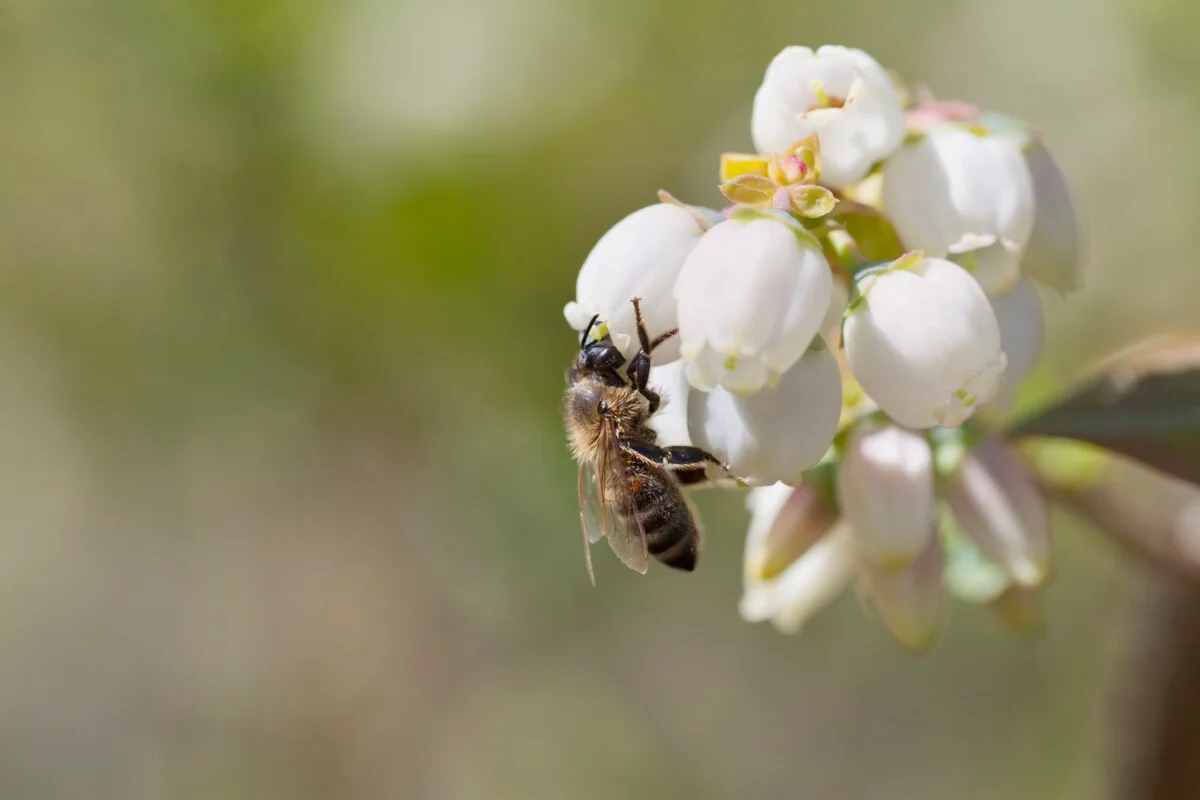
Bees are the blueberry shrub’s most important pollinating partner. Honey bees, bumblebees, carpenter bees, southeastern blueberry bees, solitary bees, and native bees have what it takes to get up inside the flower to access the blueberry nectar. Some bees will buzz as they collect, loosening the pollen and boosting the odds of successful fertilization.
Planting up a mix of wildflowers that bloom continuously from spring to fall is like giving your local bees a map to your exact location. They remember the best nectar and pollen gathering spots and will communicate their findings to other bees back at the hive.
When picking out bee-friendly flowers, choose native plants and don’t get fancy with the cultivars. True wildflowers – common varieties that haven’t been genetically modified or hybridized – will be most desirable to our bees.
7. Aromatic Herbs
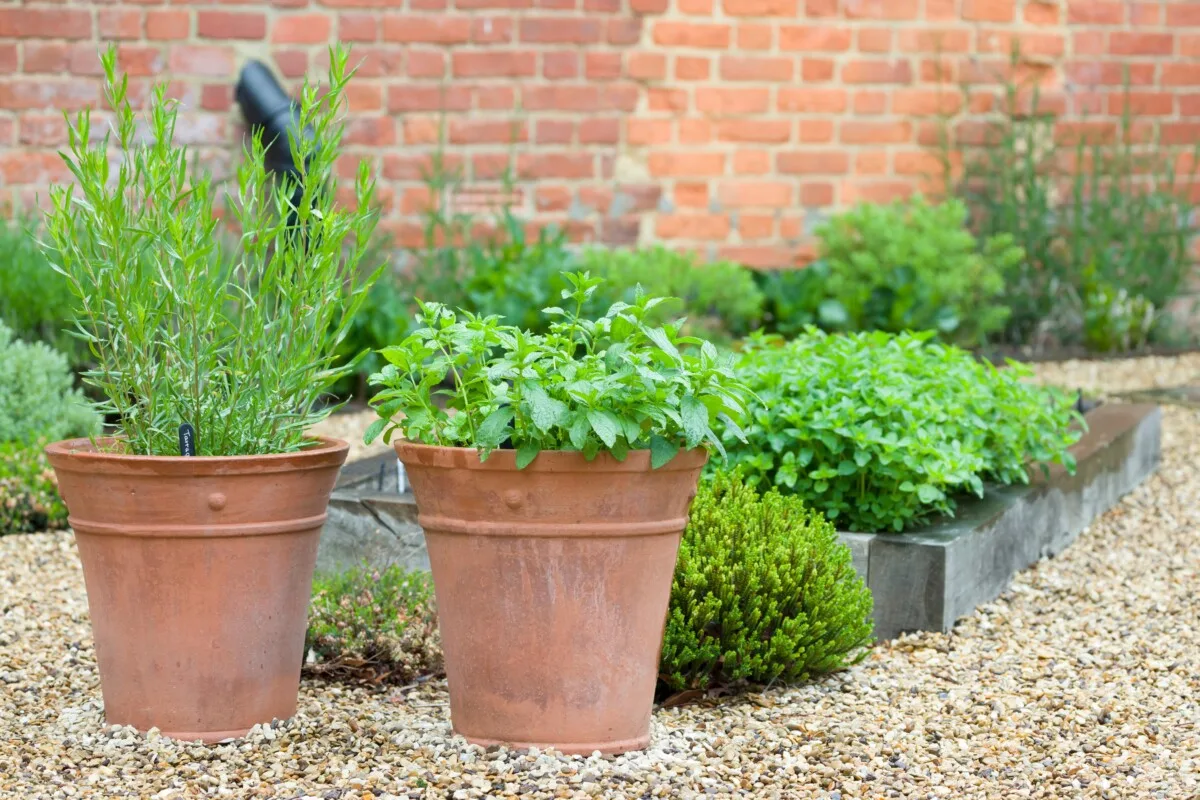
Luckily, blueberry bushes aren’t particularly prone to attacks by pests. The most common – yet infrequent – bugs that your blueberries may need to face are the Japanese beetle and the spotted wing drosophila.
Japanese beetles eat the blueberry foliage, which weakens the whole plant and leaves it more susceptible to diseases like cankers and mummy berry.
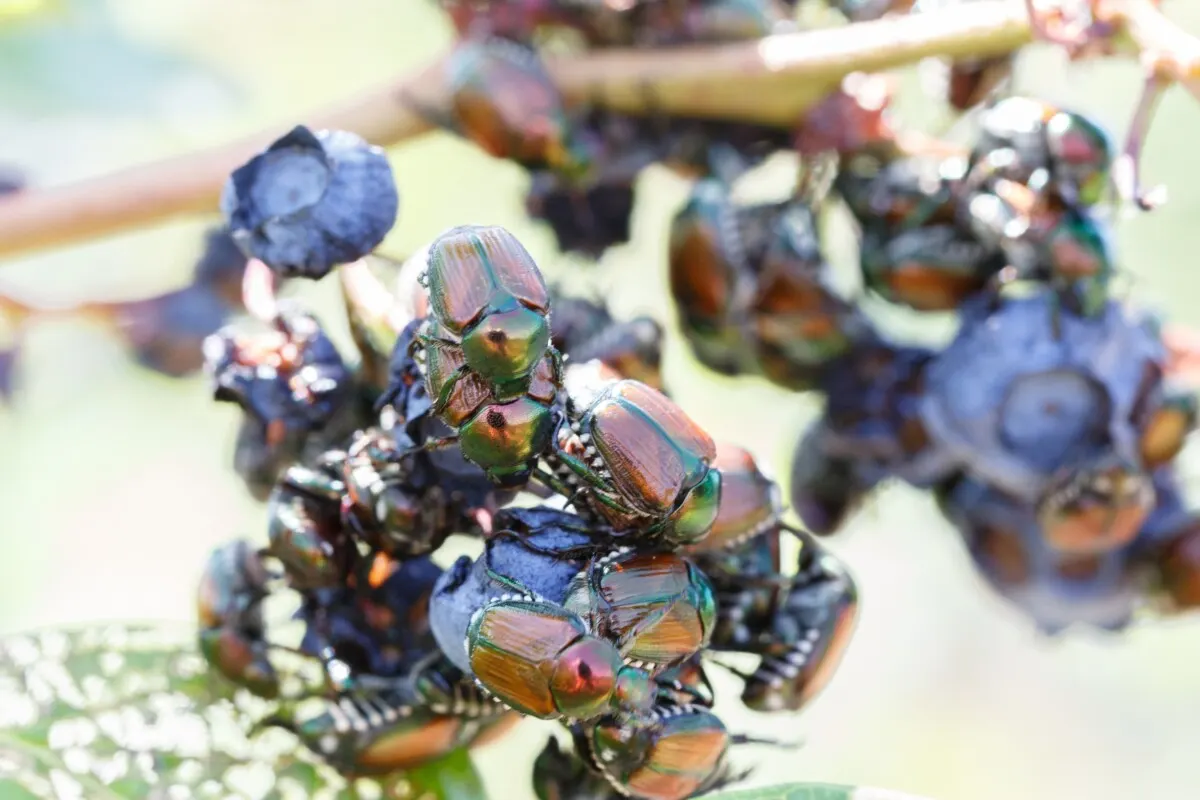
Growing chives, catmint, and garlic near your blueberries can help repel a Japanese beetle invasion. Plant lemon balm, parsley, and thyme to draw in more tachinid flies, one of the Japanese beetle’s top predators.
Spotted wing drosophila, on the other hand, lays eggs in the fruit. Once they hatch, the larvae burrow through the berries and damage them so much that the fruit becomes inedible.
Lacewing larvae will hunt down these tiny flies in force. Make your garden attractive to adult lacewings by planting dill, lovage, and oregano, and they will return the favor by laying eggs around the garden.
Bear in mind that most of these herbs grow best in neutral soils, so it’s wise not to plant them right next to your blueberries. Try planting them in pots around your blueberry bushes.
14 Plants You Should Keep Away From Blueberry
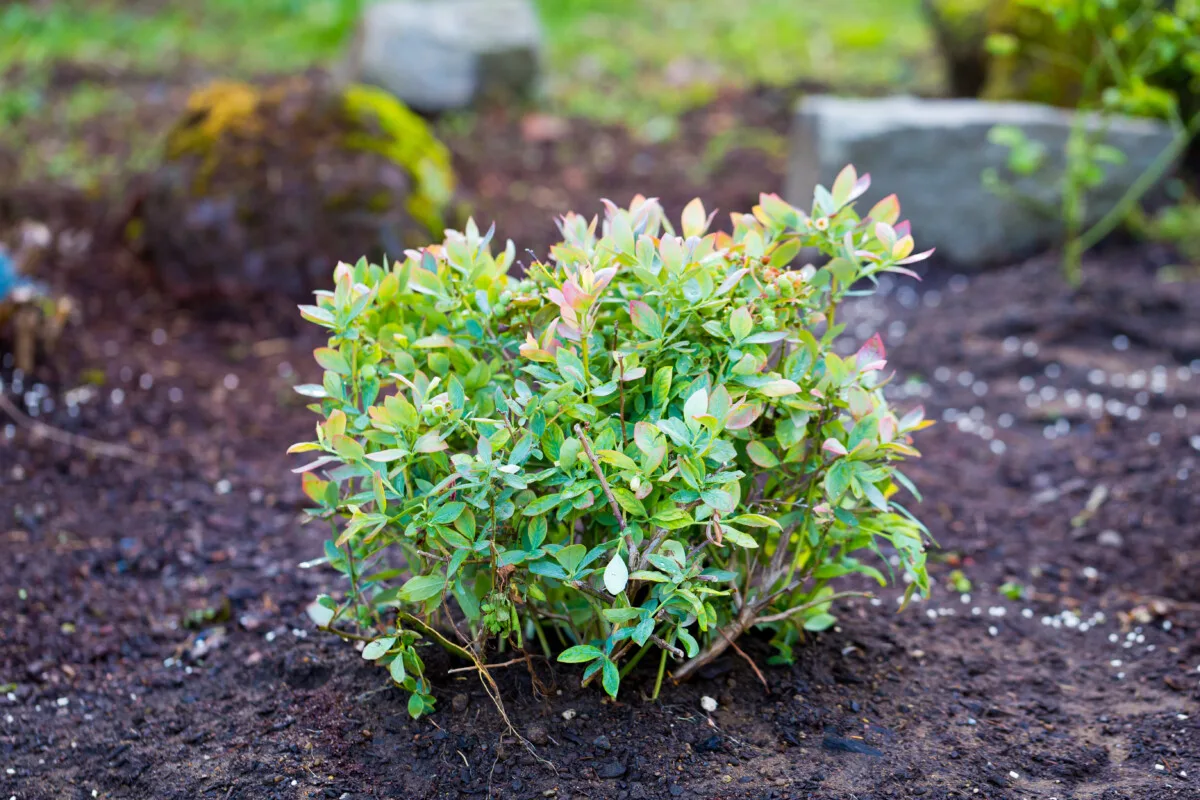
As many friends as it has in the plant kingdom, the unique cultural requirements of blueberry makes it incompatible with nearly all other plants you might want to grow in the garden.
The vast majority of fruits and vegetables require the soil be in a slightly acidic to neutral pH range between 6.0 and 7.0. And these crops also want the soil to be chock-full of nutrients, something that blueberries can’t much abide.
Here’s a few that don’t get on well with blueberry, and should always be kept in a separate planting bed:
- Beans
- Beets
- Brussels Sprouts
- Cabbage
- Cauliflower
- Cucumber
- Kale
- Lettuce
- Melons
- Peas
- Peppers
- Potatoes
- Squash
- Tomatoes
Read Next:

Get the famous Rural Sprout newsletter delivered to your inbox.
Including Sunday musings from our editor, Tracey, as well as “What’s Up Wednesday” our roundup of what’s in season and new article updates and alerts.


